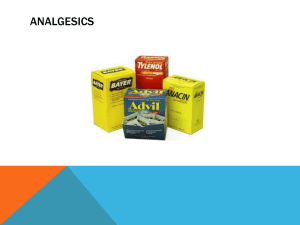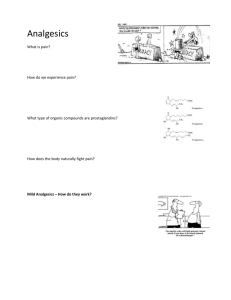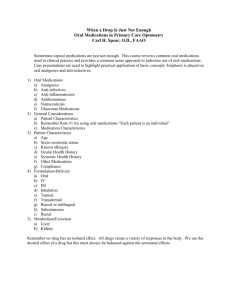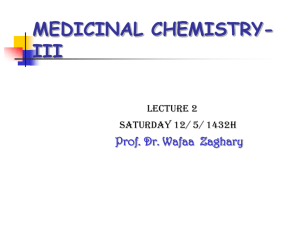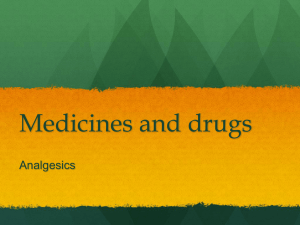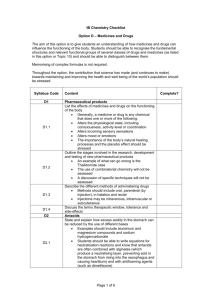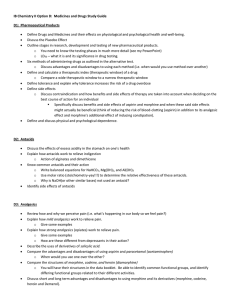Answers - Chemactive
advertisement
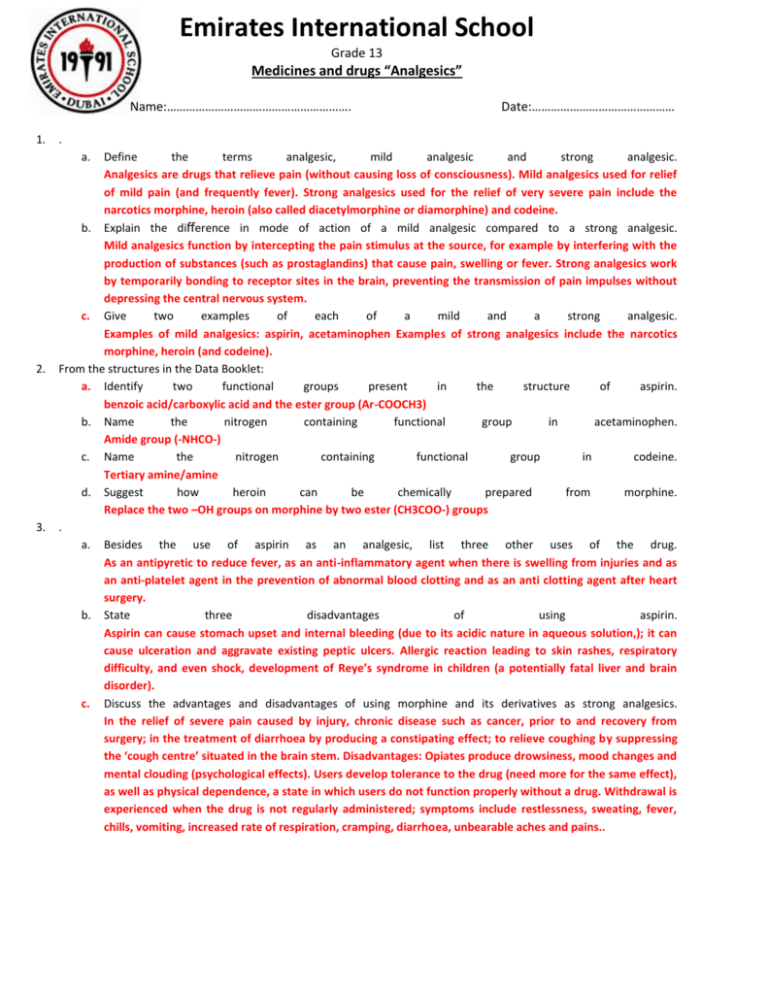
Emirates International School Grade 13 Medicines and drugs “Analgesics” Name:…………………………………………………. 1. . a. 2. 3. Date:……………………………………… Define the terms analgesic, mild analgesic and strong analgesic. Analgesics are drugs that relieve pain (without causing loss of consciousness). Mild analgesics used for relief of mild pain (and frequently fever). Strong analgesics used for the relief of very severe pain include the narcotics morphine, heroin (also called diacetylmorphine or diamorphine) and codeine. b. Explain the difference in mode of action of a mild analgesic compared to a strong analgesic. Mild analgesics function by intercepting the pain stimulus at the source, for example by interfering with the production of substances (such as prostaglandins) that cause pain, swelling or fever. Strong analgesics work by temporarily bonding to receptor sites in the brain, preventing the transmission of pain impulses without depressing the central nervous system. c. Give two examples of each of a mild and a strong analgesic. Examples of mild analgesics: aspirin, acetaminophen Examples of strong analgesics include the narcotics morphine, heroin (and codeine). From the structures in the Data Booklet: a. Identify two functional groups present in the structure of aspirin. benzoic acid/carboxylic acid and the ester group (Ar-COOCH3) b. Name the nitrogen containing functional group in acetaminophen. Amide group (-NHCO-) c. Name the nitrogen containing functional group in codeine. Tertiary amine/amine d. Suggest how heroin can be chemically prepared from morphine. Replace the two –OH groups on morphine by two ester (CH3COO-) groups . a. Besides the use of aspirin as an analgesic, list three other uses of the drug. As an antipyretic to reduce fever, as an anti-inflammatory agent when there is swelling from injuries and as an anti-platelet agent in the prevention of abnormal blood clotting and as an anti clotting agent after heart surgery. b. State three disadvantages of using aspirin. Aspirin can cause stomach upset and internal bleeding (due to its acidic nature in aqueous solution,); it can cause ulceration and aggravate existing peptic ulcers. Allergic reaction leading to skin rashes, respiratory difficulty, and even shock, development of Reye’s syndrome in children (a potentially fatal liver and brain disorder). c. Discuss the advantages and disadvantages of using morphine and its derivatives as strong analgesics. In the relief of severe pain caused by injury, chronic disease such as cancer, prior to and recovery from surgery; in the treatment of diarrhoea by producing a constipating effect; to relieve coughing by suppressing the ‘cough centre’ situated in the brain stem. Disadvantages: Opiates produce drowsiness, mood changes and mental clouding (psychological effects). Users develop tolerance to the drug (need more for the same effect), as well as physical dependence, a state in which users do not function properly without a drug. Withdrawal is experienced when the drug is not regularly administered; symptoms include restlessness, sweating, fever, chills, vomiting, increased rate of respiration, cramping, diarrhoea, unbearable aches and pains..

